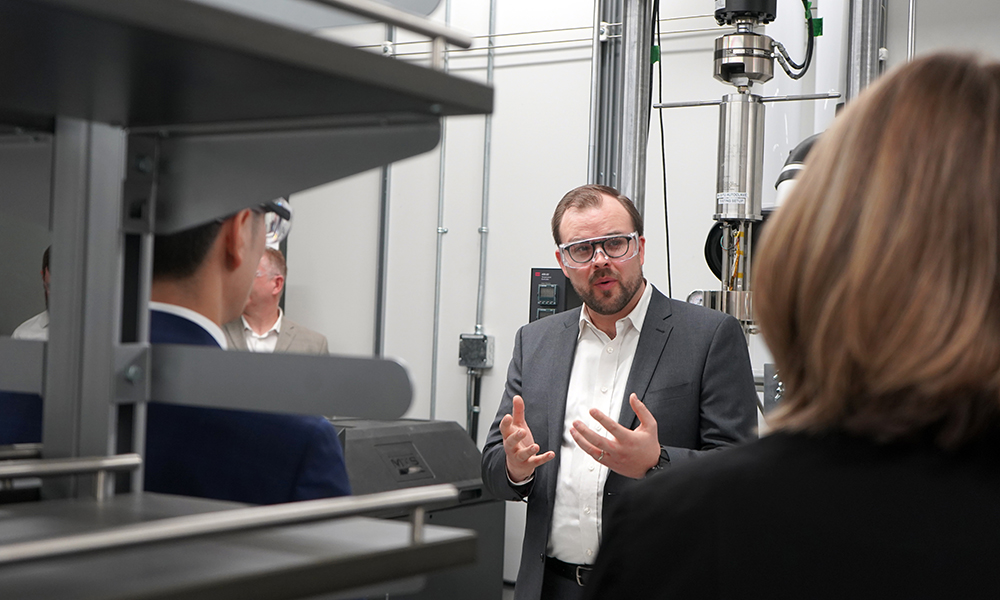
Gaten Matarazzo (Dustin), Natalia Dyer (Nancy), Joe Keery (Steve) and Charlie Heaton (Jonathan) laugh during a scene from Stranger Things. The hit Netflix series blends supernatural drama with nostalgic 1980s storytelling—and economics, at least according to a UBC Okanagan researcher. (Handout photo)
A new study co-authored by UBC Okanagan’s Dr. Julien Picault shows how scenes from hit shows like Narcos and Stranger Things can help students grasp complex economic concepts—from cartels and market control to creative destruction and inflation.
Published in The Journal of Economic Education, Teaching economics with Netflix explores how carefully selected Netflix content can help undergraduate students engage with economics in a more meaningful, accessible way.
“Students are already watching this content,” says Dr. Picault, Professor of Teaching in the Department of Economics, Philosophy and Political Science. “Our goal is to meet them where they are and use culturally relevant media to explain fundamental concepts like opportunity cost, supply and demand, or moral hazard.”
The paper introduces EcoNetflix, a free online resource Dr. Picault and collaborators at Marymount University created.
The site features teaching guides built around diverse clips from Netflix original shows, films, and documentaries from around the world, with clear connections to both introductory and advanced economics concepts.
Stranger Things and smartphones: A lesson in creative destruction
For example, in the popular alien sci-fi series Stranger Things, the characters use walkie-talkies, phone booths and cassette players. Today, a single smartphone replaces all these tools.
This shift illustrates creative destruction, where new technology makes old products obsolete. It also raises questions about cost: would buying each of those devices separately be more expensive than owning a smartphone?
And how do new products like smartphones affect how we measure inflation through the Consumer Price Index?
Narcos and cartels: Teaching market control and oligopoly
In the crime drama Narcos, based on the true story of Colombian drug lord Pablo Escobar, one scene shows Escobar meeting with rival kingpins to propose a formal alliance. He offers to manage operations while the others contribute funding in exchange for shared profits and protection.
This collusive behaviour is known as forming a cartel—an agreement among producers to avoid competition and control prices or territory. It reflects how firms and organizations operating in an oligopoly or a fragmented market may begin cooperating when powerful players see cooperation as more profitable than conflict.
By dividing the market, they reduce risk, stabilize earnings and limit outside threats—even if the arrangement is illegal or unsustainable long-term.
Why it works: Connecting real life to economic theory
The material reflects various cultural, geographic and social perspectives, aligning with efforts to make economics education more inclusive.
“It’s not just about being entertaining,” says Dr. Picault. “We want to improve learning outcomes and show how economics applies to the world students already navigate.”
The paper also argues that platforms like Netflix, with global reach and diverse catalogues, offer a rich foundation for building more inclusive economics lessons.
Dr. Picault’s recent work builds on earlier studies and teaching guides he’s authored on using pop culture to teach economics.
The post Stranger things: how Netflix teaches economics appeared first on UBC's Okanagan News.







